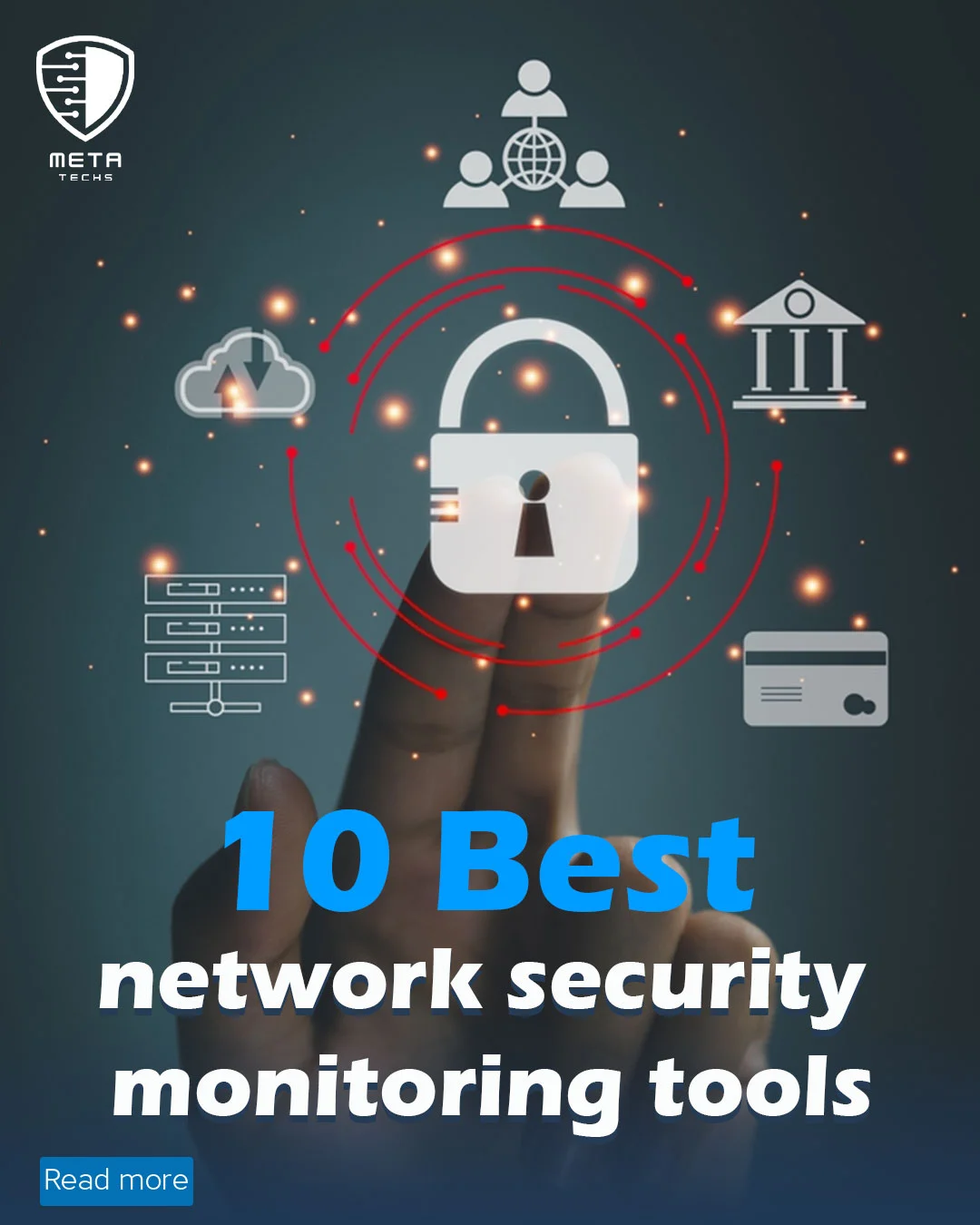As technology continues to advance and our lives become more digital, the need for network security monitoring tools has never been more critical. With cyber threats on the rise, organizations and individuals alike must take proactive measures to protect their digital assets. One of the most effective ways to safeguard networks is through the use of network security monitoring tools.
So, what exactly is a network security monitoring tool? In simple terms, it is a software or hardware solution that helps detect and respond to potential security breaches within a network. These tools monitor network traffic in real time, analyzing data packets and flagging any suspicious activity. By providing a view of network activity, they enable security analysts to identify and mitigate potential threats before they cause significant damage.

Importance of Network Security Monitoring
Network security monitoring is vital for several reasons. First and foremost, it helps organizations prevent data breaches and unauthorized access to sensitive information. By continuously monitoring network traffic, security teams can identify and respond to threats promptly, minimizing the risk of data loss or theft. Furthermore, network security monitoring tools also play a crucial role in regulatory compliance. Many industries, such as healthcare and finance, are subject to strict data protection regulations. Implementing robust network security monitoring measures ensures that organizations meet these compliance requirements and avoid costly penalties.
Common Network Security Threats
Before delving into the specifics of network security monitoring tools, it is essential to understand the common threats that organizations face. Cybercriminals employ various tactics to infiltrate networks and compromise data. Some of the most prevalent threats include:
- Malware: Malicious software such as viruses, worms, Trojans, and ransomware can infect network devices and systems, leading to data breaches, system disruptions, and financial losses.
- Phishing Attacks: Phishing involves deceptive emails, messages, or websites designed to trick users into revealing sensitive information like login credentials, credit card details, or personal data. Phishing attacks can lead to identity theft, account compromise, and unauthorized access to networks.
- Denial-of-Service (DoS) and Distributed Denial-of-Service (DDoS) Attacks: DoS and DDoS attacks aim to disrupt network services by overwhelming servers, networks, or applications with excessive traffic, causing downtime, service interruptions, and loss of productivity.
- Insider Threats: Insider threats can come from malicious insiders or negligent employees who misuse their privileges to steal data, sabotage systems, or compromise network security inadvertently. Insider threats pose significant risks to data confidentiality, integrity, and availability.
- Social Engineering: Social engineering tactics exploit human psychology to manipulate individuals into divulging confidential information or performing actions that compromise network security. Techniques include pretexting, baiting, tailgating, and phishing calls.
- Man-in-the-Middle (MitM) Attacks: MitM attacks involve intercepting and altering communication between two parties to eavesdrop, steal data, or manipulate information. Attackers can exploit vulnerabilities in network protocols or use rogue devices to carry out MitM attacks.
- Password Attacks: Password attacks include brute force attacks, dictionary attacks, and password guessing techniques aimed at obtaining unauthorized access to network resources by exploiting weak or compromised passwords.
- IoT and BYOD Risks: The proliferation of Internet of Things (IoT) devices and Bring Your Own Device (BYOD) policies introduce security risks such as unpatched vulnerabilities, weak authentication, and unauthorized access to corporate networks, leading to potential data breaches and network compromises.
- Zero-Day Exploits: Zero-day exploits target newly discovered vulnerabilities in software or hardware before vendors release patches or updates. Attackers exploit these vulnerabilities to launch targeted attacks, compromise systems, and evade traditional security defenses.
10 best network security monitoring tools 2024
- Wireshark: Wireshark is a widely used network protocol analyzer that allows users to capture and analyze network traffic in real time. It provides detailed insights into network communications, protocols, packet structures, and traffic patterns. Wireshark is invaluable for troubleshooting network issues, monitoring security threats, and performing packet-level analysis for forensic investigations.
- Snort: Snort is an open-source network intrusion detection system (NIDS) and intrusion prevention system (IPS) that monitors network traffic for suspicious activities and malicious behavior. It uses signature-based detection, protocol analysis, and anomaly detection techniques to identify and block potential threats. Snort is highly customizable and can be deployed as a standalone sensor or as part of a larger security infrastructure.
- Nmap: Nmap (Network Mapper) is a great network security monitoring tool and powerful network scanning tool used for network discovery, port scanning, service enumeration, and vulnerability assessment. It helps security professionals map out network topology, identify open ports, detect running services, and assess the security posture of networked devices. Nmap’s versatility makes it a valuable asset for both offensive and defensive security tasks.
- Suricata: Suricata is an open-source Intrusion Detection and Prevention System (IDPS) that offers high-performance network security monitoring capabilities. It is capable of inspecting network traffic in real time, detecting and blocking malicious activities, and generating alerts for suspicious events. Suricata supports multi-threading, rule-based detection, and protocol analysis for threat detection and response.
- OpenVAS: OpenVAS (Open Vulnerability Assessment System) is a vulnerability scanning tool that helps identify security vulnerabilities, misconfigurations, and weaknesses in networked systems. It conducts vulnerability assessments using a database of known vulnerabilities and security checks. OpenVAS provides detailed reports, prioritizes vulnerabilities based on severity, and facilitates remediation efforts to improve overall network security posture.
- Zeek (formerly Bro): Zeek is a powerful network security monitoring tools framework that focuses on network traffic analysis, protocol logging, and behavior-based anomaly detection. It passively monitors network traffic, extracts metadata, and generates detailed logs for analysis. Zeek’s scripting language allows for custom rule creation, threat hunting, and detection of suspicious network activities.
- pfSense: pfSense is an open-source firewall and routing platform that offers robust network security features, including firewall rules, VPN support, traffic shaping, and intrusion detection/prevention. It provides a graphical user interface (GUI) for easy configuration of firewall policies, network settings, and security controls. pfSense is highly customizable, scalable, and suitable for small to large-scale network deployments.
- SnortSam: SnortSam is a companion tool for Snort that enhances its capabilities by automating firewall rule creation and blocking of malicious traffic in response to Snort alerts. It integrates with various firewall platforms, such as iptables, pfSense, and Cisco ASA, to enforce network security policies based on Snort’s detection rules. SnortSam helps improve incident response and threat mitigation efforts.
- Security Onion: Security Onion is a network security monitoring and log management platform that integrates several open-source tools, including Snort, Suricata, Bro (Zeek), Elasticsearch, and Kibana. It provides full packet capture, network traffic analysis, intrusion detection, and centralized log aggregation for threat detection and incident response. Security Onion is designed for network security operations centers (SOCs) and security professionals to enhance visibility and defense against cyber threats.
- Email Security Tools: Email security tools are software solutions designed to protect email communications and prevent various email-based threats, such as phishing attacks, malware distribution, spam, and data breaches. These tools employ a range of techniques and technologies to ensure the confidentiality, integrity, and availability of email messages
Features to Consider When Choosing Network Security Monitoring Tools
When selecting the right network security monitoring tool for your organization, several essential features should be taken into consideration. These features can significantly impact the effectiveness and efficiency of your network security efforts. Some key features to look for include:
- Real-time Monitoring: Ensure that the tool provides real-time visibility into network traffic and activity, allowing you to identify and respond to threats promptly.
- Threat Intelligence: Look for tools that offer threat intelligence capabilities, such as threat feeds and behavior analytics, to enhance your ability to detect and prevent security incidents.
- Scalability: Consider the scalability of the tool to ensure it can handle your organization’s network traffic volume and growth.
- Integration: Choose a tool that seamlessly integrates with your existing security infrastructure, such as firewalls and SIEM platforms, to maximize its effectiveness.
- Reporting and Analytics: Robust reporting and analytics capabilities are crucial for gaining insights into network activity and identifying trends or anomalies.
Conclusion
By continuously monitoring network traffic and analyzing data, these tools enable organizations to detect and respond to potential security breaches promptly. Whether you opt for open-source solutions or commercial platforms, it is crucial to select a network security monitoring tool that meets your unique requirements. By following best practices and implementing robust network security measures, you can safeguard your organization’s data and protect against evolving cyber threats.
Ensuring your digital safety is paramount in an increasingly connected world. Implementing network security monitoring tools is a proactive step towards safeguarding your digital assets and maintaining a secure network environment. So, don’t wait any longer—start exploring the vast array of network security monitoring tools available and take control of your network security today.
Q&A
Is SIEM a network monitoring tool?
SIEM (Security Information and Event Management) is not solely a network monitoring tool but rather a security solution that combines aspects of network monitoring with log management, event correlation, threat detection, and incident response capabilities. While network monitoring tools focus primarily on monitoring network traffic, devices, and activities for security threats and anomalies, SIEM solutions go beyond that by integrating data from various sources such as logs, endpoints, applications, and security devices.
SIEM platforms collect, normalize, and analyze data from diverse sources to provide a centralized view of an organization’s security posture. They use correlation rules, threat intelligence feeds, and behavioral analytics to detect suspicious activities, identify security incidents, and generate alerts for security teams. SIEM systems also facilitate incident investigation, forensic analysis, and compliance reporting by correlating security events and providing detailed insights into security incidents.







